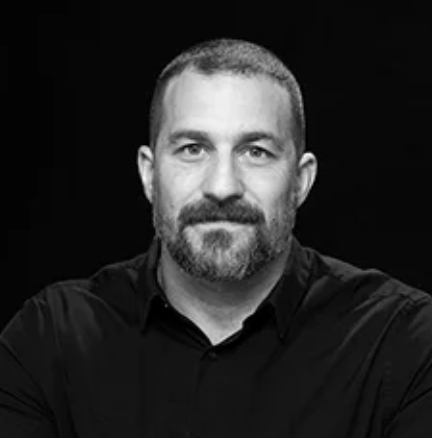Sleep
Last Updated: 12.06.23
2 Min Read
Sleep Toolkit: Tools for Optimizing Sleep & Sleep-Wake Timing
Huberman presents a comprehensive toolkit for optimizing sleep quality, duration, and impact on health and performance. The toolkit includes behavioral and supplement-based tools that harness light, temperature, food, exercise, caffeine, and digital devices to improve sleep. Strategies for recovering from poor sleep, jet lag, and shift work are also discussed.
Key Takeaways
High level takeaways from the episode.
Protocols
Source
We recommend using this distillation as a supplemental resource to the source material.
Full Notes
Importance of Sleep
- Sleep is the foundation of mental health, physical health, and performance
- Controls immune system, wound healing, skin health, appearance, cognitive function, and longevity
- Life quality improves with better sleep
Tools for Optimizing Sleep
- Light and Darkness
- Light and dark are powerful tools to encourage the nervous system to be awake or asleep
- Exposure to sunlight in the morning helps regulate the circadian rhythm
- Limiting exposure to artificial light at night can improve sleep quality
- Temperature
- Body temperature and ability to fall and stay asleep are closely related
- Body needs to drop by 1–3 degrees to enter deep sleep
- Cooling the sleeping environment can help maintain deep sleep
- Waking up is related to body temperature; body warms up to wake up
- Electrolytes
- Sodium, magnesium, and potassium are essential for nerve cell function
- Proper electrolyte balance can improve brain function and overall health
- Replenishing electrolytes after exercise or on hot days can prevent dehydration and support optimal sleep
-
Personalized Nutrition
- Blood tests and DNA tests can provide insight into individual health needs
- Adjusting nutrition, exercise, and supplementation based on test results can optimize sleep and overall health
- Smart Mattress Covers
- Cooling, heating, and sleep tracking capabilities can improve sleep quality
- Adjusting mattress temperature throughout the night can help maintain deep sleep and wake up more easily
- Supplementation
- Single-ingredient supplements can help build a personalized supplementation protocol for optimal sleep and health
- Quality and purity of supplements are important factors to consider
Adjusting Sleep Schedule
- Tools mentioned can also help shift sleep schedules for work or travel
- Techniques can help fall back asleep if waking up in the middle of the night
- Recovery from poor sleep can be faster with the use of these tools
Optimizing Sleep - Factors affecting sleep:
- Light and dark
- Temperature
- Food
- Exercise
- Caffeine
- Supplements
- Digital tools
Morning Routine for Better Sleep
- View bright sunlight within the first 30–60 minutes after waking
- Triggers cortisol increase for alertness and focus
- Sets a timer for falling asleep later at night
- Do not wear sunglasses during this time
- Eyeglasses or contact lenses with UV protection are okay
Supplements for Sleep
- Magnesium threonate
- Apigenin
- Theanine
- Glycine
- GABA
- Inositol
- Useful for those on low-carb diets or fasting before sleep
- Helps with falling back asleep if waking up in the middle of the night
- Can reduce anxiety throughout the day
Digital Tools for Sleep
- Non-sleep deep rest scripts
- Zero-cost tools available on YouTube and apps
- Help with falling asleep, staying asleep, and improving sleep quality
- Self-hypnosis
- Clinically and research-supported tools for better sleep
- Not related to stage hypnosis or loss of control
Morning Sunlight Viewing
- Grounded in core physiology
- Hundreds of peer-reviewed papers show that morning light viewing is a powerful stimulus for wakefulness and has a positive impact on sleep
- Artificial lights in the home are not bright enough to trigger the cortisol mechanism and other wake-up mechanisms early in the day
- Artificial lights can disrupt sleep if viewed too late at night or in the middle of the night
Guidelines for Morning Sunlight Exposure
- Clear day: 5 minutes of sunlight exposure
- Cloudy day: 10 minutes of sunlight exposure
- Overcast or rainy day: 20–30 minutes of sunlight exposure
- Do not try to get sunlight exposure through a windshield, sunglasses, or a window; it won’t work
- If unable to go outside, use sunlight simulators or daylight simulators (e.g., ring lights, LED panels)
Making Up for Missed Sunlight Exposure
- If you miss a day, try to get twice as much sunlight exposure the following day
- Use a light meter app to measure the brightness of your environment
Benefits of Morning Sunlight Viewing
- Sets the rhythms of the brain and body
- Triggers proper metabolism
- Sets a timer for falling asleep about 16 hours later
- Suppresses melatonin, a hormone that makes you sleepy
- Interacts with the adenosine system and helps wash out residual adenosine if you didn’t sleep enough
Optimizing Sleep and Wakefulness - First 60–90 minutes of the day set the stage for sleep optimization
- Tools for the early part of the day:
- Light (sunlight exposure)
- Temperature (cold water exposure or exercise)
- Caffeine (delay intake for 90–120 minutes after waking)
- Food (eating early in the day)
Sunlight Exposure
- Get bright sunlight exposure early in the day
- Helps regulate circadian rhythm and improve sleep quality
Temperature
- Cold water exposure (1–3 minutes) or exercise can increase core body temperature
- Cold water exposure releases adrenaline and dopamine, promoting alertness and motivation
- Exercise can also increase core body temperature and improve alertness
Caffeine
- Delay caffeine intake for 90–120 minutes after waking to avoid afternoon crash
- Limit caffeine intake after 4 PM to less than 100 mg
- Caffeine intake late in the day can disrupt sleep architecture
Food
- Eating early in the day supports biological clock mechanism for alertness
- Timing of meals can impact energy levels and sleep quality
Fasting and Eating Habits - Fasting in the early morning hours or first part of the day is common
- Some people don’t eat until 11:00 a.m. or noon
- Eating early in the day can increase metabolism and alertness
- However, a large meal can cause sleepiness due to blood and resources being diverted to digestion
Optimizing Wakefulness and Focus
- Three critical periods throughout each 24-hour cycle
- First critical period: from waking up until about 3 hours after waking
- Morning sunlight, caffeine 90–120 minutes after waking, exercise, etc.
- Second critical period: throughout the day and afternoon leading into evening
- Be cautious about ingesting too much caffeine
- Napping is fine, but don’t nap too late in the day or for too long
- Non-nappers can try alternatives like Yoga Nidra or NSDR scripts for relaxation and rejuvenation
- First critical period: from waking up until about 3 hours after waking
Napping
- Napping is fine, but don’t nap so late in the day or for so long that it disrupts nighttime sleep
- Keep naps shorter than 90 minutes
- Non-nappers can try alternatives like Yoga Nidra, NSDR scripts, or the Reverie app for relaxation and rejuvenation
Importance of Light Exposure for Sleep - Deep relaxation through naps or NSDR can improve sleep
- Limit caffeine intake, especially after 4:00 p.m.
- Intense exercise in the afternoon can delay circadian clock
- Morning sunlight exposure helps regulate sleep and wakefulness
- Evening sunlight exposure provides a second reference point for the circadian clock
Critical Periods for Sleep Regulation
- Morning hours
- Get bright sunlight exposure
- Exercise early in the day
- Middle of the day
- Limit caffeine intake
- Be mindful of the clock-delaying effects of exercise
- Avoid napping too long or too late in the day
- Late evening and nighttime
- Avoid bright artificial lights
- Dim indoor lights and use low-placed lights
- Use as little artificial light as needed for activities
- Ideally, use candlelight or moonlight
Effects of Light on Mood and Brain Function
- Dr. Samaritar from the National Institutes of Mental Health explores the effects of light on mood and brain function
- Morning and evening sunlight exposure have different effects on the circadian clock
- Morning light has more yellow-blue contrast, signaling wakefulness
- Evening light has more yellows, blues, and oranges, signaling that sleep is coming
- Getting sunlight exposure in both morning and evening helps optimize sleep and wakefulness
Effects of Light Intensity on Sleep - Moonlight and candlelight are low light intensity
- Moonlight: bright but low intensity
- Candlelight: 3–10 lux, compared to 100‑1000 lux for artificial lights
- Avoid bright artificial lights between 10:00 PM and 4:00 AM
- Overhead fluorescent lights are the worst
- Melatonin, a hormone that helps with sleep, is suppressed by bright light exposure
- Viewing evening light (sunset) can offset some negative effects of artificial light at night
Temperature and Sleep
- Early in the day: temperature increases (from cold showers or exercise) wake you up
- Evening: opposite approach
- Hot bath or sauna (20–30 minutes) followed by a cool shower can help with sleep
- Sleeping environment should be cool or cold
- Lower room temperature by at least 3 degrees
- Use controllable temperature mattress covers or fans
- Avoid wearing socks to allow heat to escape through feet
- Exercise late in the day can make it harder to sleep
- Lower core body temperature to help calm the nervous system and promote sleep
Temperature Shifts for Sleep
- Lower core body temperature to help calm the nervous system and promote sleep
- Taking a hot shower or bath and then cooling off can help with sleep
- Adjusting temperature rhythm can help with irregular sleep-wake cycles
Alcohol, CBD, and THC
- Alcohol and THC can help some people fall asleep, but the sleep quality is suboptimal
- CBD and THC can help with anxiety-related sleep issues
- Consider supplements and other methods for better sleep quality
Sleep Supplements
- Magnesium Threonate, Apigenin, and Theanine can improve sleep for some people
- Dosages: 145mg Magnesium Threonate, 50mg Apigenin, 100–400mg Theanine
- Take 30–60 minutes before bedtime
- Adjust dosages and combinations based on individual needs and tolerance
- Preferable to melatonin due to potential hormonal interactions
Additional Sleep Supplements
- Glycine and GABA can be taken every third or fourth night for enhanced sleep
- Dosages: 2g Glycine, 100mg GABA
- Myo-Inositol can be taken every other night in addition to the standard sleep stack
- Dosage: 900mg Myo-Inositol
Inositol for Sleep - Enhances ability to fall asleep quickly
- Helps fall back asleep after waking up in the middle of the night
- 900mg of Myoinositol taken 30–60 minutes before sleep
- Long tail of anxiety suppression throughout the day
Behavioral Tools for Sleep
- NSDR (Nonsleep Deep Rest) or Reverie App
- Reverie App developed by David Spiegel, associate chair of psychiatry at Stanford
- Cost: $14.99/month, $99.99/year, or $249 lifetime purchase (only available for Apple currently)
- Alternative zero-cost tool: NSDR available on YouTube
Eye Masks and Earplugs
- Eye masks improve ability to stay asleep, but need to ensure room is cool enough
- Earplugs can help block out noise, but may not work for everyone
Elevating Feet and Head
- Elevating feet can improve sleep quality due to glymphatic washout
- Elevating head can help those with acid reflux
Sleep Apnea and Nose Breathing
- Sleep apnea is dangerous and can lead to various health issues
- Training to be a nose breather during sleep can help prevent sleep apnea
- Taping mouth shut during sleep can force nose breathing
- Practicing nose breathing during low-intensity cardiovascular exercise can help become a nose breather during sleep
Sleep Consistency and Quality - Keep consistent sleep and wake times
- Sleeping in on weekends can disrupt sleep quality
- Limit sleeping in to an extra hour beyond normal wake up time
- Better to wake up consistently and take a nap in the afternoon if needed
Caffeine and Sleep
- Delay caffeine intake 90–120 minutes after waking, especially on days with insufficient sleep
- Caffeine can disrupt sleep, especially compensatory sleep
- Using deep relaxation techniques can help partially offset lack of sleep
Temperature Minimum and Sleep
- Temperature minimum: the time when your body is at its lowest temperature in the 24-hour cycle
- Occurs approximately 2 hours before your typical wake-up time
- Viewing bright light, exercising, or consuming caffeine before temperature minimum can delay your clock
- This makes you want to go to sleep later and wake up later the next night
- Viewing bright light, exercising, or consuming caffeine after temperature minimum can advance your clock
- This makes you want to go to bed earlier and wake up earlier the next night
- Useful for adjusting to new time zones, shift work, or changing sleep schedules
Shift Work and Jet Lag
- Try to stay on the same shift for two weeks at a time to minimize negative effects on the brain and body
- Use red light when needing to be awake during sleep cycles
- Red light allows you to be awake without disrupting cortisol rhythm
- Various commercial sources for red light bulbs are available
Becoming a Morning Person
- Use temperature minimum tools to gradually become a morning person
- Early morning risers have shown positive effects on cognition and physical performance
- Night owls can deliberately shift to become early risers for these benefits
Podcast on Sleep Optimization Tools
- Light, temperature, food, exercise, caffeine supplements, and digital tools can improve sleep quality
- Most tools are zero cost
- Supplements and digital tools may have some cost
- Three critical periods for sleep optimization:
- Early in the day
- Middle of the day and late afternoon
- Middle of the night
- Implementing these tools can improve sleep quality, daytime alertness, focus, and overall well-being
- Sleep is the foundation of mental health, physical health, and performance in all endeavors
Support the Podcast
Huberman Lab Premium Subscription
- $10/month
- 1 Ask Me Anything (AMA) episode per month
- Significant contribution to fund human scientific research selected by Dr. Huberman (with dollar-for-dollar matching from the Tiny Foundation)
- Early-access to Huberman Lab live events
- Subscribe here
Huberman Lab Neural Network Newsletter
- Zero-cost newsletter with summaries of podcast episodes and protocolsToolkits for sleep, focus, neuroplasticity, cold/heat exposure, fitness, and flexibility
- Sign up at hubermanlab.com (email not shared)
- Downloadable PDFs of previous newsletters available without sign-up
Huberman Lab Social Media
Sponsors
Levels Continuous Glucose Monitor
- Helps assess the impact of food, food combinations, and timing on blood glucose
- Provides real-time feedback on diet and blood sugar
- levelshealth.com/huberman
Inside Tracker
- Personalized nutrition platform that analyzes blood and DNA data
- Provides personalized dashboard with nutrition, behavior, and supplement recommendations
- Now includes apolipoprotein B (APOB) measurement in their ultimate plan
- Visit insidetracker.com/huberman for 20% off any plan
Momentous
- High-quality supplements used by sports teams and in Department of Defense studies
- Single ingredient formulations
- livemomentous.com/Huberman
LMNT
- Sciencebacked ratio of electrolytes: 1 gram of sodium, 200 milligrams of potassium, and 60 milligrams of magnesium and no sugar.
- drinklmnt.com/huberman for free sample pack
Whoop
- Fitness wearable device that tracks daily activity and sleep
- Provides real-time feedback on optimizing health
- Visit join.whoop.com/Huberman for the first month free
Roka
- Eyeglasses and sunglasses designed for athletes and everyday people
- Visit roka.com and enter code Huberman for 20% off the first order
Helix Sleep
- Customized mattresses and pillows for better sleep
- Visit Helixsleep.com/Huberman for up to $350 off and two free pillow


